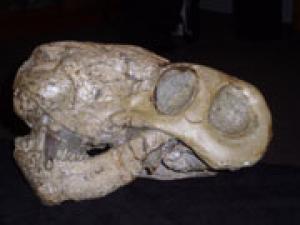
About 250 million years ago, at the end of the Permian, and event caused a mass extinction which killed over 90 percent of the life on Earth. Ecosystems were destroyed and organisms were left to recover; it was the closest life came to being wiped out ever.
The full recovery of those ecosystems took at least 30 million years, according to new research from the University of Bristol. Previous studies indicated that life just bounced back relatively quickly in the form of ‘disaster taxa’ (opportunistic organisms that filled the empty ecospace left behind by the extinction), such as the hardy Lystrosaurus, a barrel-chested herbivorous animal, about the size of a pig.
But this latest research led by Sarda Sahney and Professor Michael Benton at the University of Bristol and recently published in Proceedings of the Royal Society B indicates that rich ecosystems with a big diversity of species emerged only after 30 million years. Sahney said:
“Our research shows that after a major ecological crisis, recovery takes a very long time. So although we have not yet witnessed anything like the level of the extinction that occurred at the end of the Permian, we should nevertheless bear in mind that ecosystems take a very long time to fully recover.”
They analyzed the recovery of tetrapods – animals with a backbone and four legs, such as amphibians and reptiles – and found that the dramatic restructurations which took place took a lot longer than initially anticipated. Professor Benton explained:
“Diversity is most commonly assessed by tallying the number of taxa on a global scale, but these studies are subject to the vagaries of sampling. By examining well-preserved and well-studied faunas, the taxonomic and ecological recovery of communities after the Permian extinction event can be examined more accurately, and the problems of geological bias are largely avoided.”









